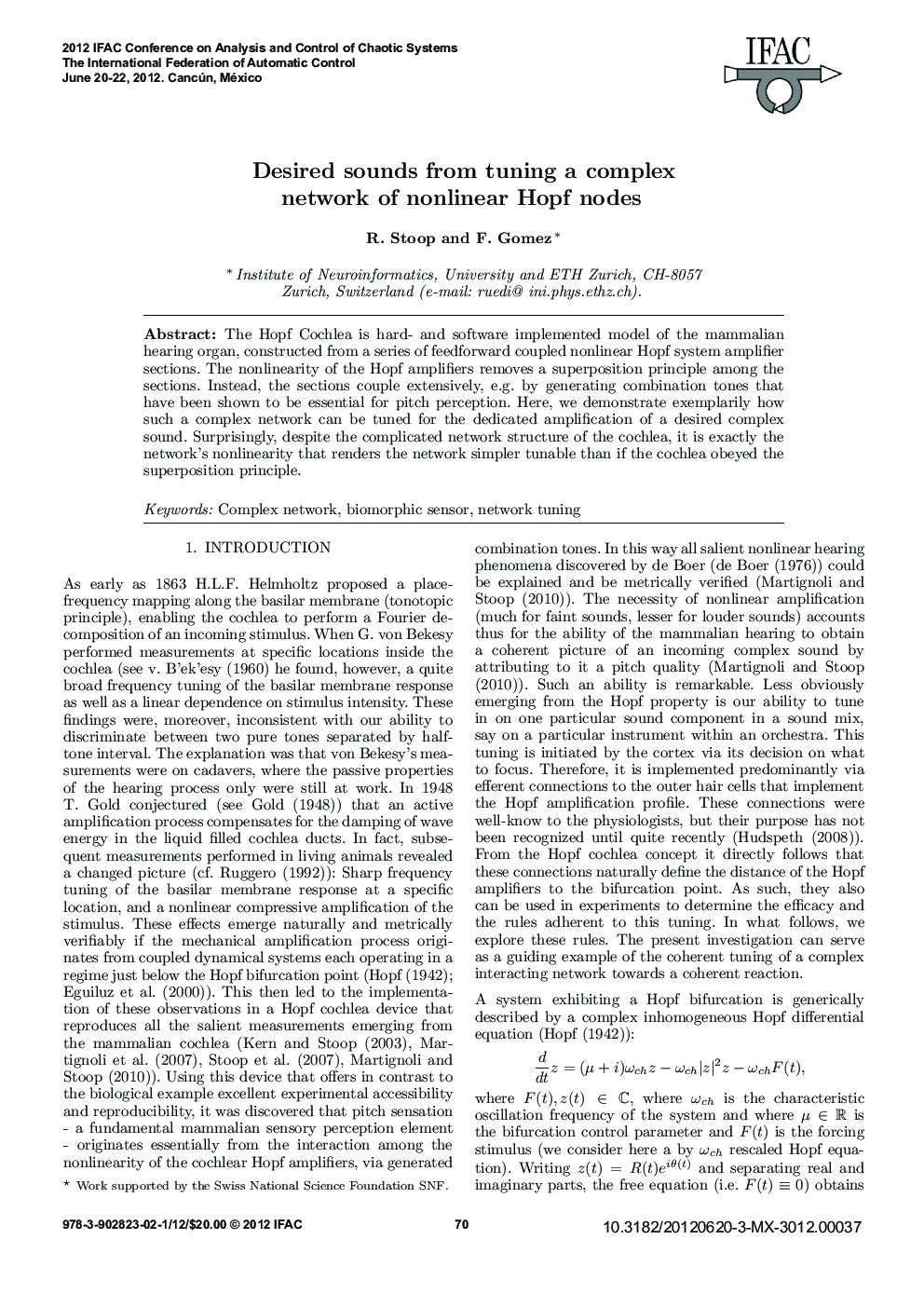| Article ID | Journal | Published Year | Pages | File Type |
|---|---|---|---|---|
| 718615 | IFAC Proceedings Volumes | 2012 | 5 Pages |
The Hopf Cochlea is hard- and software implemented model of the mammalian hearing organ, constructed from a series of feedforward coupled nonlinear Hopf system amplifier sections. The nonlinearity of the Hopf amplifiers removes a superposition principle among the sections. Instead, the sections couple extensively, e.g. by generating combination tones that have been shown to be essential for pitch perception. Here, we demonstrate exemplarily how such a complex network can be tuned for the dedicated amplification of a desired complex sound. Surprisingly, despite the complicated network structure of the cochlea, it is exactly the network's nonlinearity that renders the network simpler tunable than if the cochlea obeyed the superposition principle.
